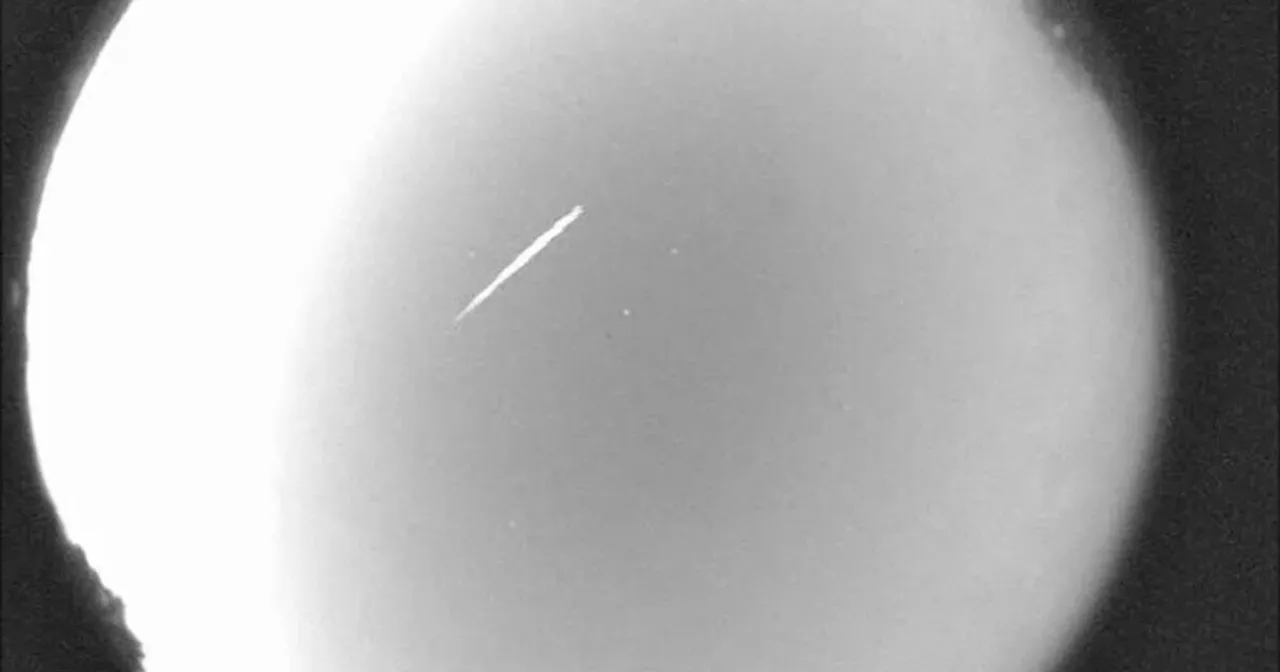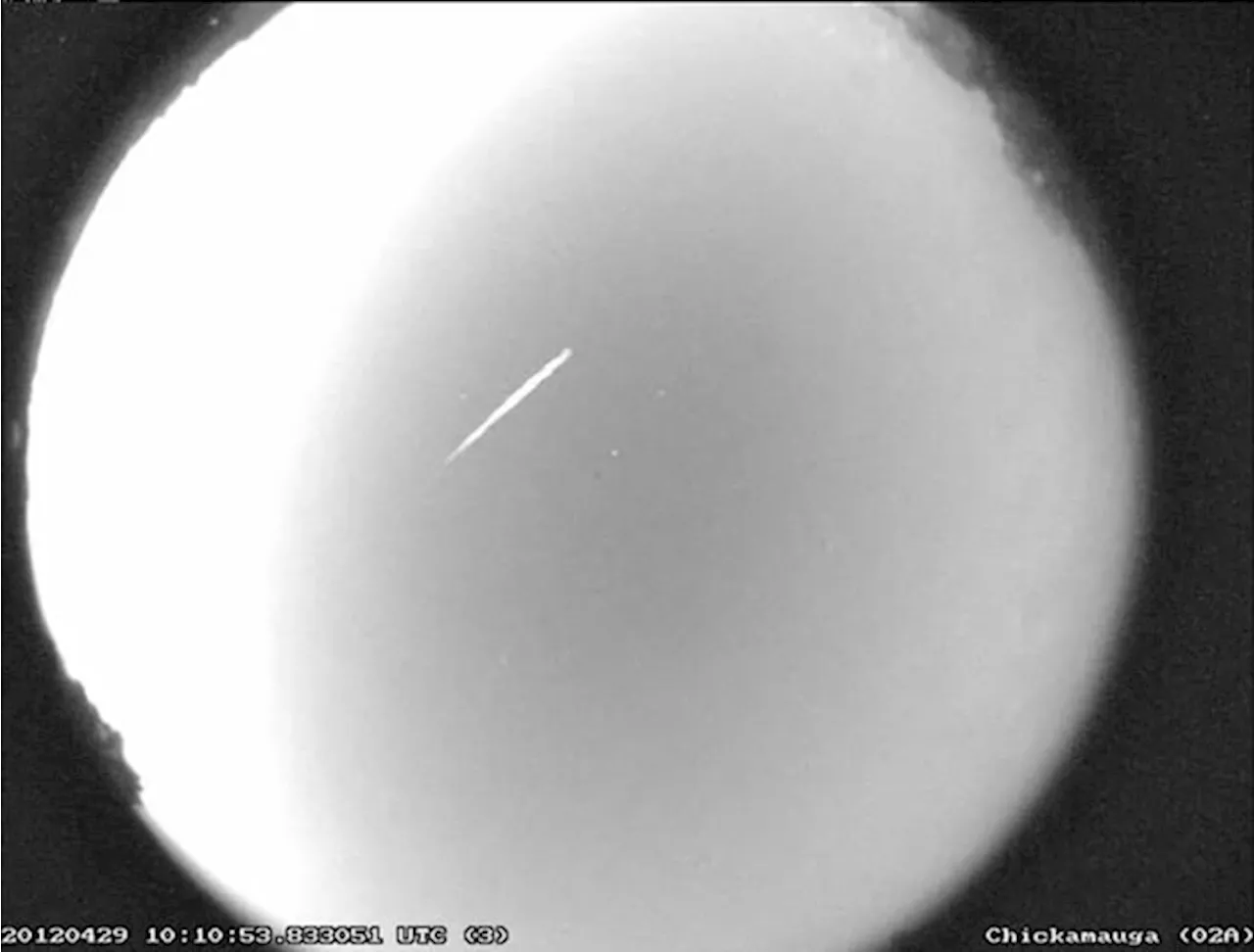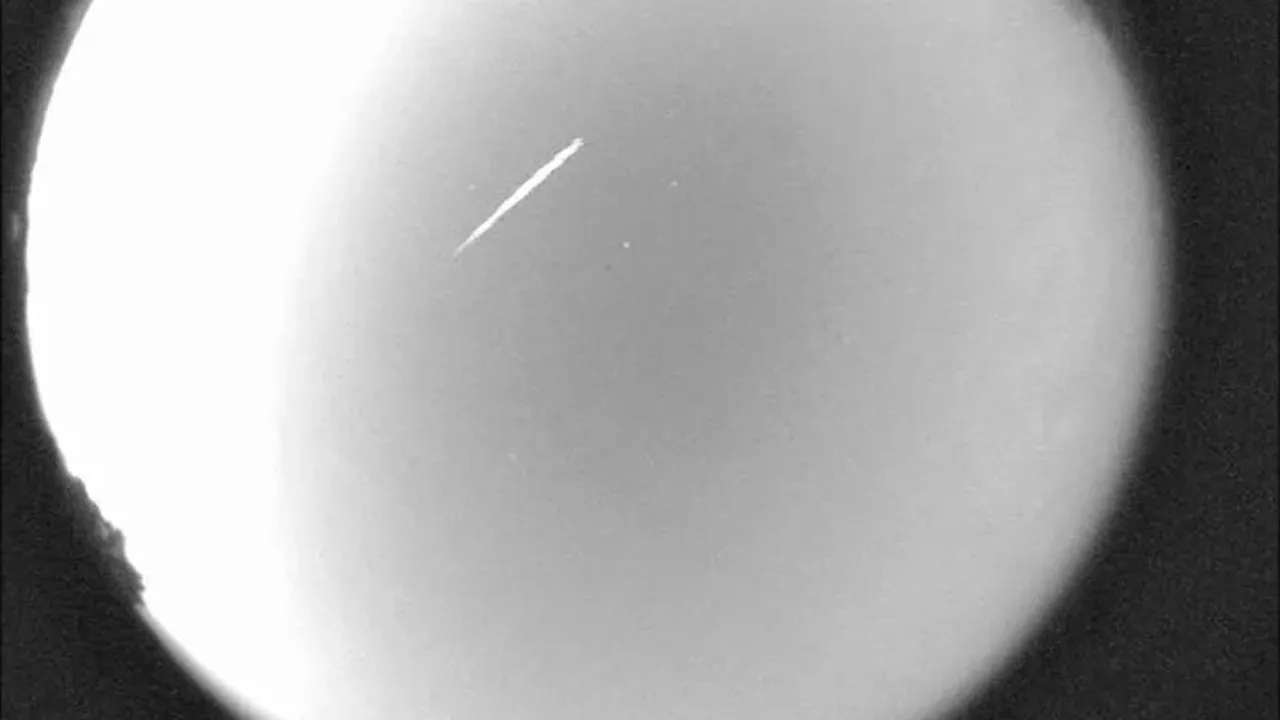The Eta Aquarid meteor shower peaks this weekend. Astronomers say it should be visible in both hemispheres. The Eta Aquarids occur every year in early May. The shower is caused by debris from Halley's comet. This year’s peak activity happens early Sunday with an expected 10 to 30 meteors visible per hour in the Northern Hemisphere.
This photo provided by NASA shows an Eta Aquarid meteor streaking over northern Georgia on April 29, 2012. The Eta Aquarid meteor shower peaks this weekend. Astronomers say it should be visible in both hemispheres. WASHINGTON — The Eta Aquarid meteor shower, remnants of Halley’s comet, peaks this weekend. And with just a waning crescent moon in the sky, it should be visible.happens early Sunday with an expected 10 to 30 meteors visible per hour in the Northern Hemisphere.
Most meteor showers originate from the debris of comets. The source of the Eta Aquarids is Halley’s comet. When rocks from space enter Earth’s atmosphere, the resistance from the air makes them very hot. This causes the air to glow around them and briefly leaves a fiery tail behind them — the end of a “shooting star.”
The glowing pockets of air around fast-moving space rocks, ranging from the size of a dust particle to a boulder, may be visible in the night sky.The Lyrid meteor shower peaks this weekend, but it may be hard to see itIt’s easier to see shooting stars under dark skies, away from city lights. Meteor showers also appear brightest on cloudless nights when the moon wanes smallest.
The Southern Hemisphere will have the best view of Eta Aquarids, but a waning moon just 14% full will allow for clear viewing in both hemispheres, according to the American Meteor Society.The Associated Press Health and Science Department receives support from the Howard Hughes Medical Institute’s Science and Educational Media Group. The AP is solely responsible for all content.
United Kingdom Latest News, United Kingdom Headlines
Similar News:You can also read news stories similar to this one that we have collected from other news sources.
 Eta Aquarid meteor shower 2024: Where, when and how to see itDaisy Dobrijevic joined Space.com in February 2022 having previously worked for our sister publication All About Space magazine as a staff writer. Before joining us, Daisy completed an editorial internship with the BBC Sky at Night Magazine and worked at the National Space Centre in Leicester, U.K.
Eta Aquarid meteor shower 2024: Where, when and how to see itDaisy Dobrijevic joined Space.com in February 2022 having previously worked for our sister publication All About Space magazine as a staff writer. Before joining us, Daisy completed an editorial internship with the BBC Sky at Night Magazine and worked at the National Space Centre in Leicester, U.K.
Read more »
 The Eta Aquarid meteor shower, debris of Halley's comet, peaks this weekend. Here's how to see itThe Eta Aquarid meteor shower peaks this weekend.
The Eta Aquarid meteor shower, debris of Halley's comet, peaks this weekend. Here's how to see itThe Eta Aquarid meteor shower peaks this weekend.
Read more »
 The Eta Aquarid meteor shower, debris of Halley's comet, peaks this weekend. Here's how to see itThe Eta Aquarid meteor shower peaks this weekend
The Eta Aquarid meteor shower, debris of Halley's comet, peaks this weekend. Here's how to see itThe Eta Aquarid meteor shower peaks this weekend
Read more »
 The Eta Aquarid meteor shower, debris of Halley's comet, peaks this weekend. Here's how to see itThe Eta Aquarid meteor shower peaks this weekend.
The Eta Aquarid meteor shower, debris of Halley's comet, peaks this weekend. Here's how to see itThe Eta Aquarid meteor shower peaks this weekend.
Read more »
 The Eta Aquarid meteor shower peaks this weekend. Here's how to see itThe Eta Aquarid meteor shower peaks this weekend
The Eta Aquarid meteor shower peaks this weekend. Here's how to see itThe Eta Aquarid meteor shower peaks this weekend
Read more »
 Cosmic Light Show via Halley's Comet To Fill Skies This WeekendThe annual Eta Aquarid meteor shower is due to peak this weekend, caused by the Earth passing through the debris trail of the famous Halley's Comet.
Cosmic Light Show via Halley's Comet To Fill Skies This WeekendThe annual Eta Aquarid meteor shower is due to peak this weekend, caused by the Earth passing through the debris trail of the famous Halley's Comet.
Read more »
